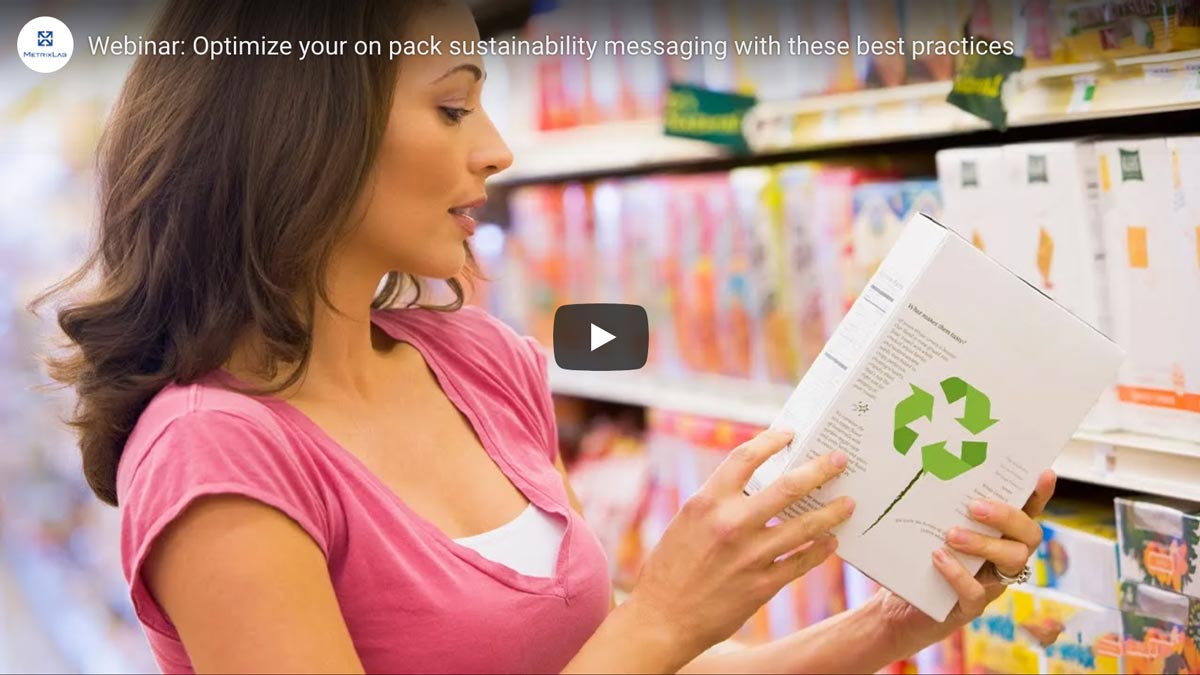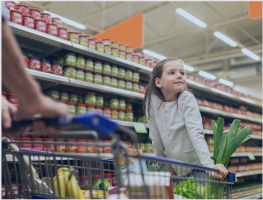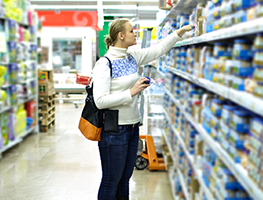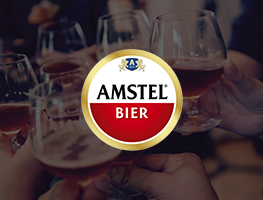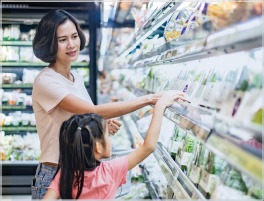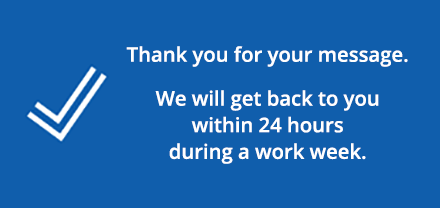Consumers want to know about your sustainable packaging initiatives! That’s why we hosted a webinar to go over the best practices when promoting your sustainability improvements on your packaging. As a brand, your challenge is to communicate your sustainability effectively without negatively impacting shelf visibility, findability or design appeal. It’s a delicate balancing act, but we’ve got some tips so you can best communicate your messaging on the packaging itself and optimize the power of your packaging design. Weren’t able to join us for the webinar? Read on below for those tips, and watch the recording here: There are 4 big guidelines you can follow to make sure you best convey your sustainable packaging improvements. 1 Prioritize product benefit messaging 2 Switch-in and switch-out messages 3 Amplify your message with icons and claims 4 Make disruptive material changes for disruptive growth Mastering sustainability messaging is only step 1. The rest of your pack design needs to be optimized too. Check out these 9 elements you can optimize to stand out on the shelf. 1 Use contrast to stand out 2 Leverage (branded) visual assets for instant brand recognition to help consumers make decisions faster 3 Unite your product line with common elements but differentiate the variants 4 Include all the design recipe ingredients on the packaging 5 Make sure the design recipe ingredients are featured in the right order 6 Make sure there’s congruence between visual, structural and textual design elements 7 Use design elements that reflect your product’s value 8 Persuade consumers with both generic main category drivers and distinctive brand choice drivers 9 Find the right balance between visibility, communication and persuasion Key takeaways for effective sustainability communication
Respect the design hierarchy. Communicate product benefits before sustainability messages.
Balance sustainability messaging with brand messaging. Consider running temporary sustainability messages.
Icons and claims work together to strengthen each other – especially if there are 3 or more claims in play.
But make sure to check your pack against the big 4 requirements for strong packaging: Shelf visibility, variant findability, appeal and benefits perception.Follow these 9 tips for powerful packaging design
Contrasting colors can make your package pop on shelves. But make sure they are appealing and complementary.
Love your logo! Make sure it features prominently on your packaging.
Customers want variety, so make sure they can easily pick out your line’s variants on the packaging.
The “magic recipe” for design elements are: Brand, product, functional benefit, RTB, end-promise, CTA. Make sure they are all on your packaging!
This means featuring your brand before the product variant, and function before emotion.
All of your design elements should relay the same message. The more your packaging design elements speak the same language, the more powerful it will be.
Is your value positioning an economy, mainstream or premium brand? Use visual cues to demonstrate.
A bottle of shampoo might convey that it cleans hair (category driver) but also makes your hair – and personality – shine (brand benefit).
There’s no magic formula, but that’s where creativity meets data. Want to know more?
Contact us for more information to get started
Webinar: Optimize your on-pack sustainability messaging with these best practices
